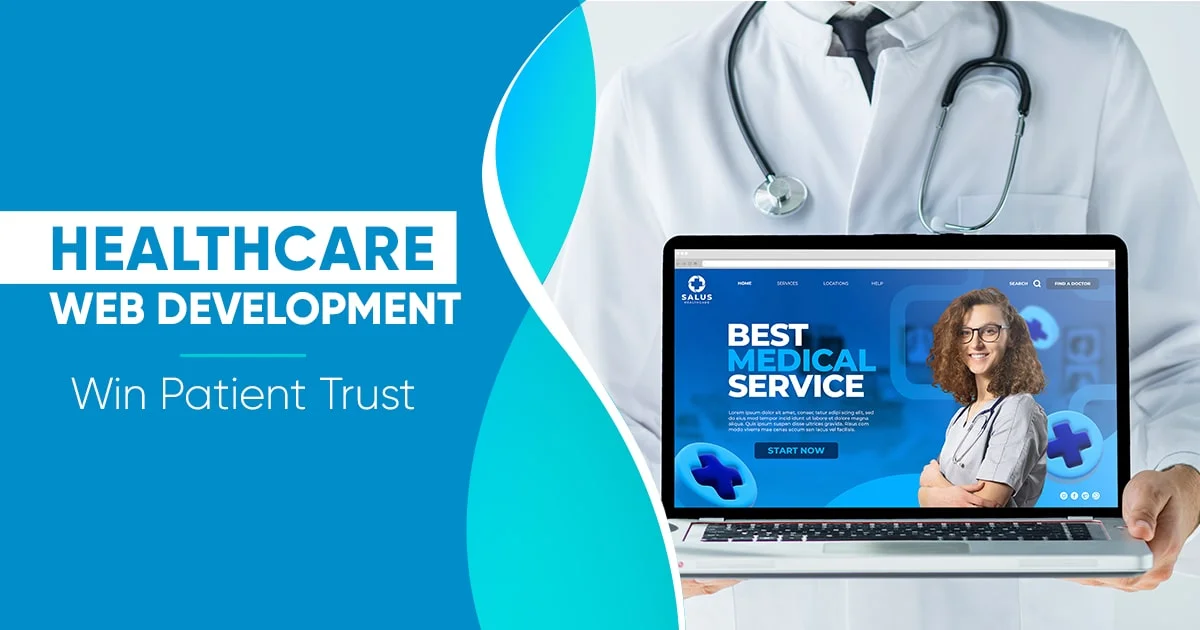In the healthcare industry, having a user-friendly website is crucial for delivering a seamless experience to patients. An effective healthcare website not only provides essential information but also makes it easy for patients to book appointments, access their medical records, and find answers to their health-related questions. By implementing the right web design principles, healthcare providers can enhance user experience and foster better patient engagement. In this article, NetSoft shares 12 web design principles that will ensure your healthcare website delivers a seamless patient experience.
1. Prioritize User-Friendly Navigation
Clear and simple navigation helps patients find the information they need quickly. Organize content into intuitive categories such as services, patient resources, and contact details. A well-structured navigation bar ensures that visitors don’t get lost and can easily access key areas of your website.
2. Optimize for Mobile Devices
With more people using mobile devices to browse the internet, it’s crucial that healthcare websites are mobile-responsive. Mobile optimization ensures that your website looks and functions well on smartphones and tablets, making it easier for patients to book appointments, access services, or read health information on the go.
3. Provide Easy Access to Patient Portals
Make sure patient portals are easy to find and access. Include prominent links to login pages for appointment scheduling, test results, and medical records. Ensuring a seamless experience within these portals will encourage patients to engage more with your healthcare services.
4. Focus on Accessibility
Healthcare websites must be accessible to all users, including those with disabilities. Implement accessibility features such as screen reader compatibility, text resizing options, and keyboard navigation. Ensuring ADA (Americans with Disabilities Act) compliance is not just a legal requirement but a crucial step to delivering an inclusive patient experience.
5. Use High-Quality Visuals
A healthcare website should reflect a sense of trust and professionalism. High-quality images, videos, and graphics can enhance the visual appeal of your website. Use professional photos of your staff, clinic, and facilities to build credibility and create a welcoming atmosphere for patients.
6. Incorporate Clear Call to Actions (CTAs)
CTAs are essential for guiding patients to take the next step, whether it’s scheduling an appointment or contacting your office. Place CTAs strategically throughout the site and make them stand out using contrasting colors and concise, action-oriented language such as “Book an Appointment” or “Contact Us.”
7. Provide Comprehensive Health Resources
Offering informative health resources such as articles, videos, and FAQs can enhance the patient experience by providing valuable educational content. By addressing common health concerns or questions, your website can position your healthcare organization as a trusted resource for patients.
8. Ensure Fast Loading Times
A slow website can frustrate patients and cause them to leave before they find the information they need. Optimize loading times by compressing images, enabling browser caching, and minimizing unnecessary code. A fast website enhances user satisfaction and reduces bounce rates.
9. Highlight Key Services
Clearly display your most important healthcare services on the homepage or landing pages. Use icons, images, and brief descriptions to make it easy for patients to understand what services you provide and how they can benefit from them.
10. Include Testimonials and Reviews
Patient testimonials and reviews are powerful tools for building trust. Feature positive feedback from satisfied patients to give potential visitors confidence in your healthcare services. Testimonials help humanize your organization and reassure new patients that they are making the right choice.
11. Implement Secure Online Forms
Security is paramount for healthcare websites, especially when collecting personal patient information. Ensure that all forms are encrypted and HIPAA-compliant, protecting sensitive data and offering patients peace of mind when submitting their details online.
12. Offer Multilingual Options
Many healthcare providers serve diverse patient populations, so offering content in multiple languages can greatly improve accessibility. Providing multilingual options helps ensure that all patients, regardless of language, can understand the information on your website.
We offer transparent pricing and work closely with you to ensure that you get the best value for your investment. Our web design services cover everything from custom designs to ongoing maintenance, ensuring your website performs optimally.
Ready to explore website design or redesign in Dubai? Contact NetSoft at +971 50 2194018 to discuss your project and receive a custom quote today!




